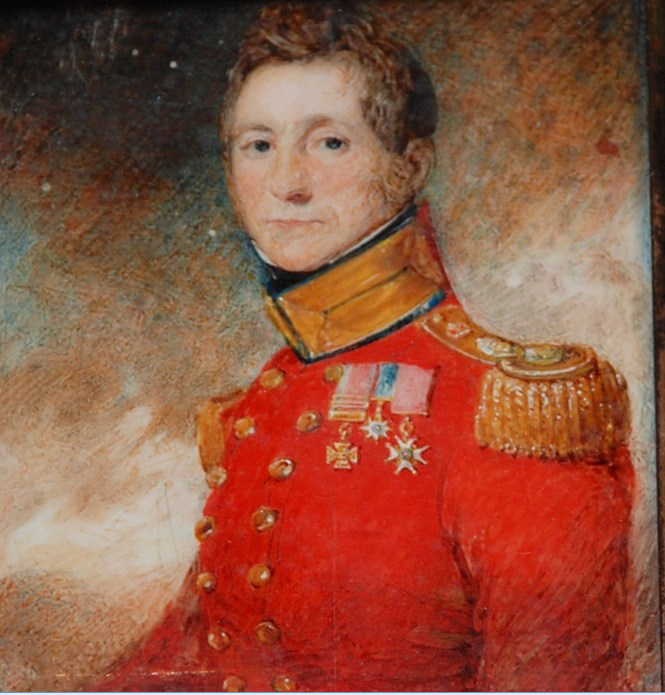This video includes the background to a scenario from my new book, Throwing Thunderbolts, a Wargamer’s Guide to the War of the First Coalition 1792-7, published by Helion. It also shows the scenario used as a participation game at the Other Partizan 2023 wargames show in Newark UK. The game was played using 15mm figures and with Black Powder rules, using scenario specific rules to manage the effects of attacking at night on movement and visibility. Fort Mulgrave was the main fortification defending the Caire Peninsula which overlooked Toulon harbour. Napoleon, then a chef de bataillon, had proposed that the capture of the peninsula would precipitate the evacuation of the Allies from Toulon as their ships would be vulnerable to the fire from the artillery posted there. Napoleon himself commanded one of the four assault columns and was wounded during the assault.
Category Archives: Historical Research for Wargames
Episode 32 Gen.de Div. Scherer’s Instruction to the Armee d’Italie 1795
This video shows a Black Powder mini-game designed to illustrate General Scherer’s instruction to the Army of Italy in late 1795, anticipating a transition from mountain warfare to fighting on the plains of north Italy. The scenario highlights the aggressive use of tirailleurs.
Vae Victis review of Throwing Thunderbolts
In issue 171 Vae Victis publshed an excellent review of Throwing Thunderbolts;

My translation of the review is;
This new Helion booklet is impressive, with more than three hundred A4 paperback pages. He looks back at the First Coalition, which was formed in reaction to the declaration of war by the France << the King of Bohemia and Hungary” on 20 April 1792. In fact, almost all European states, with the notable exception of Russia, are gradually joining forces to face the threat of revolutionary France. More than a third of the book is devoted to a chronological presentation of the military campaigns that punctuated those years, from 1792 to the Treaty of Campo-Formio, in October 1797 (only the <<perfidious Albion:” remained at war with the French Republic after that date). Overseas events and major naval battles are also discussed. The narrative is well done, concise and complete, with, among other things, parts on the military Vendée and various royalist upheavals. A few (rather sketchy) maps give the locations of the main battles, but there are none with the precise movements of the armies and even less with movements during the battle. In fact, the whole remains general… while occupying a hundred pages.
The second part focuses on the armies of the protagonists: Austria, the Holy Roman Empire (Saxony, Bavaria, Hanover, Hesse-Kassel, Hesse-Darmstadt and Baden for its main << components >>), France, Great Britain, Prussia, Sardinia-Piedmont, Spain, Naples, the United Provinces and French royalists (Vendéens, Chouans, émigrés in armies formed or in the service of foreign armies). You will discover a wealth of information: numbers and types of regiments, organization of units, equipment, tactical considerations (especially on thin order, deep order, mixed order, skirmishers), etc. Again, the whole is well done and forms a good synthesis on the subject. The next part looks at the representation of this period on our gaming tables, with tips for choosing a rule (depending on the desired level of representation). You will also find a table of <<ratings” of the French army on the one hand, and of the coalition on the other, according to the years (from 1792 to 1797) and according to different criteria: command, training, discipline, morale, speed of manoeuvre changes, etc. This information is taken from an <<old” book by veteran Donald Featherstone published in the 1970s. Also given are considerations on the competence of the generals (taken from Napoleon’s Battles), with four notches, from bad (Mack for example) to excellent (Bonaparte, Davout, etc.), including average (Berthier, etc.) and good (Augereau, Bernadotte, etc.). These are only proposals: feel free to modify them according to your own research. Here are practical tips on how to build an army and paint your miniatures.
You will then discover a dozen scenarios, quite eclectic, with different situations and game rules: skirmishes, pitched battles, naval battles, etc. Each scenario is allowed about ten pages, with numerous explanations and historical notes, detailed orders of battle, possible options, etc. Note a scenario for Black Powder about the attack on the <<Fort Mulgrave” on the night of December 16 to 17, 1793, during the siege of Toulon, with a certain battalion commander Bonaparte at the head of the reserve of 1700 men. You will find this same officer, promoted to brigadier general, during the royalist insurrection of 13 Vendémiaire Year IV (5 October 1795): the gaming table represents the church of Saint-Roch and its surroundings (rue Saint-Honoré, rue de la Convention, etc.) and Sharp Practice is used for this scenario. In addition, information is given on the manufacturers of figurines for this period and websites on the subject. A bibliography completes the picture. The whole of this supplement is well done, although its presentation is relatively << austere >>. You will discover a period that is not very well represented on our tables compared to the First Empire, while it offers interesting challenges.
Throwing Thunderbolts, A Wargamer’s Guide to the War of the First Coalition, 1792-1797, guide to armies and battles during the French Revolution. Published in English by Helion (www.helion.co.uk). Prix indicatif : 40 €.
An Affair of Posts -the battle of Lincelles, 18 August 1793
On 22 September 2021, I presented this paper the Society of Army Historical Research Centenary Conference at the National Army Museum, Chelsea. My final rehearsal was captured on video and can be seen on my Youtube Channel;
My wargame of Lincelles is shown in this video
Some great feedback
My chapter ‘Maucune’s Division at Salamanca’ in Helion’s ‘Glory is Fleeting’ has been well received by the expert on Salamanca, Rory Muir;
Here are a couple of illustrations from the chapter.
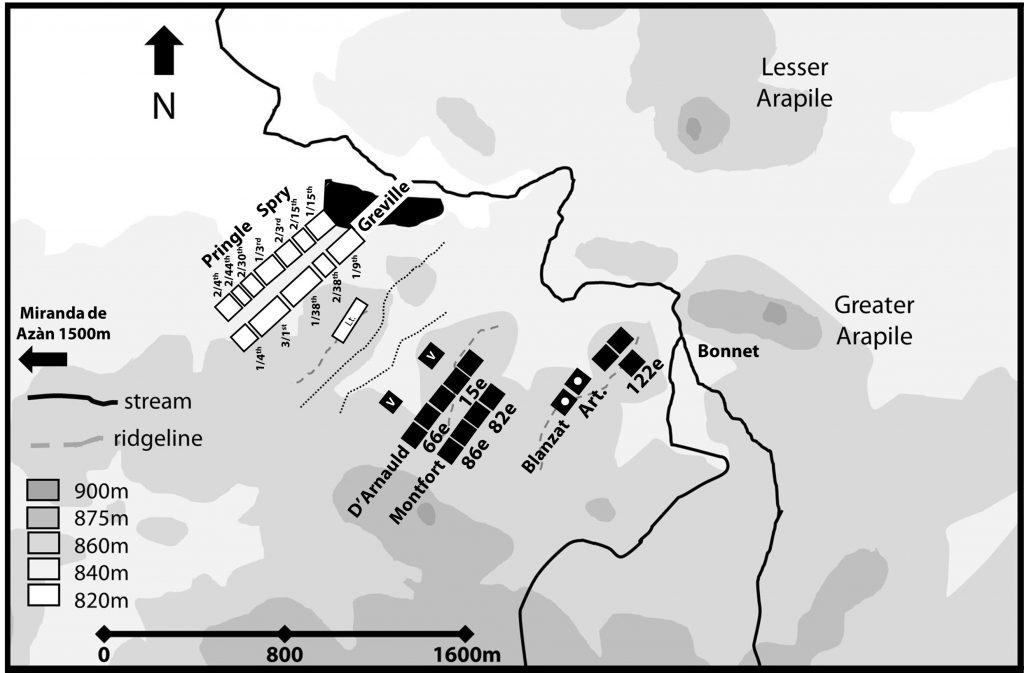
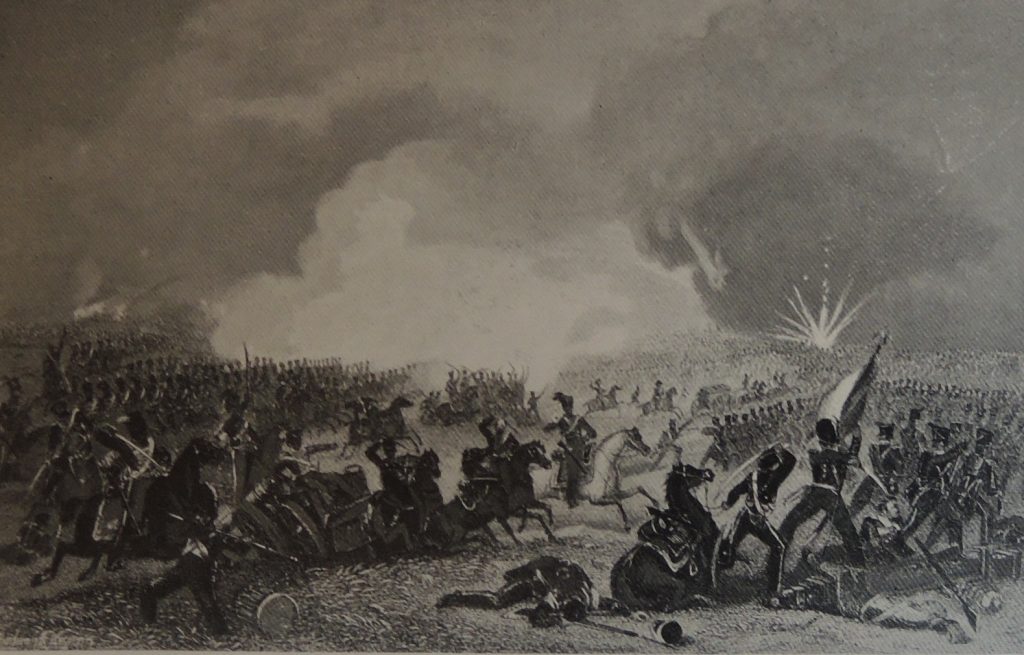
Amongst other things I suggest that the 5e battalion 66e Ligne lost its new all green battalion fanion to the 11th Foot in the closing stages of the battle. This illustration from the National Army Museum, just might be that flag;
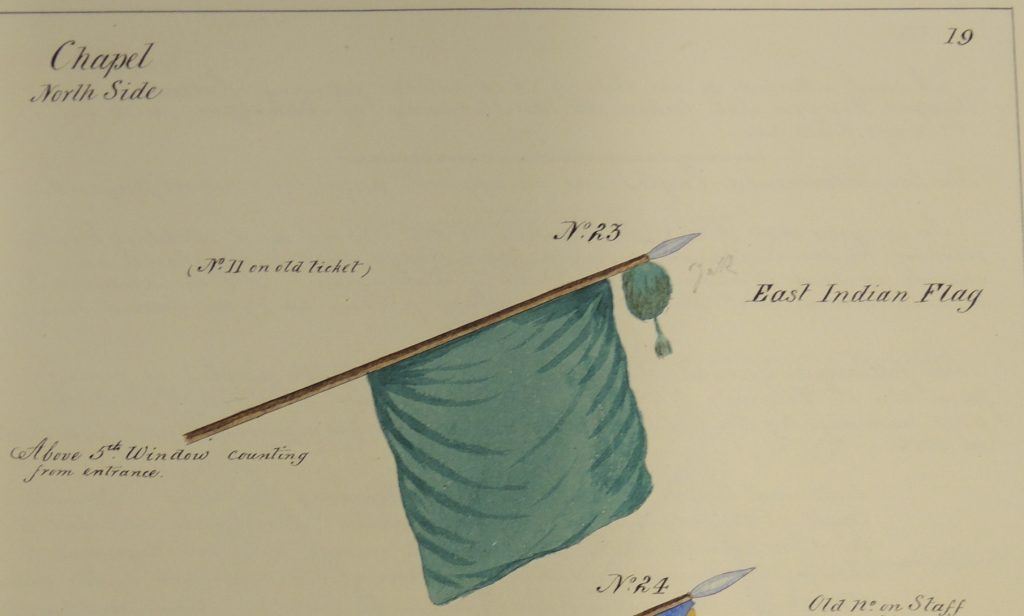
I also included an analysis of the story and myths of the captured eagles and other trophies taken from the French at Salamanca. A separate article on one of those myths can be found on the Helion website using this link;
Wellington at Bay now published
My new book Wellington at Bay, the battle of Villamuriel 25 October 1812 has now been published by Helion Books. Initial reception has been good and it has four 5 star reviews on Amazon. Get yours at Helion ;
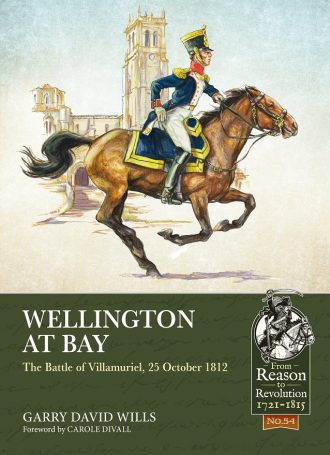
I have produced some videos in support of this launch which are available on my Youtube channel.
Some feedback from the major of Villamuriel;

Linselles 18th August 1793 – The French troops
Since my previous post I have undertaken some more detailed research into the French troops that held Linselles and Le Blaton when Lake’s Guards brigade attacked.
From the French perspective, the action at Linselles on the 18th August 1793, was led by three French Generals, Macdonald, Jourdan and Béru. Dupuis gives the order of battle for the French Army on the 30th July 1793. The infantry is largely organised into provisional demi-brigades comprising an old regular battalion combined with two Volunteer battalions.
The Camp of Madelaine to the north of Lille contained 8 such demi-brigades. In addition a new Division was created under the command of General de Brigade Béru. This division comprised the following units;
5th de Vosges Volunteers; 1st Bn/45th Infantry Regiment; 10th Paris Volunteers
10th Seine-et-Oise Volunteers; 1st Bn/47th Infantry Regiment; 2nd Vienne Volunteers
2nd Paris Volunteers
1st St. Denis Volunteers; 1st Bn/19th Infantry Regiment; 6th Paris Volunteers
Company of Light artillery with two 12pdrs, two 8pdrs and two howitzers
12th Chasseurs à Cheval
6th Cavalry
of these, on the 18th, the demi-brigade comprising the 1st St. Denis Volunteers; 1st Bn/19th Infantry Regiment; 6th Paris Volunteers together with the 3rd Franc battalion and the 15th Light Infantry battalion, from Jourdan’s command were dispatched to attack Roubaix under the command of General Desroques.
Chef de Brigade Etienne Jacques Macdonald advanced from Le Quesnoi to take Le Blaton from the Dutch, presumably with his own demi-brigade comprising the 5th l’Aisne Volunteers, 2nd Bn/2nd Infantry Regiment & 40th National Volunteers. Also present were the 2nd Finistere Volunteers.
It is known that Jourdan himself led the demi-brigade of the 1st/45th Regiment to Linselles, including the 5th Vosges and 10th Paris Volunteers.
This left Béru with the demi-brigade comprising the 10th de Seine-et-Oise Volunteers, the 1st/47th Regiment & the 2nd Vienne Volunteers, together with the 2nd Paris Volunteers.
The 2nd Bn/12th Infantry Regiment and the 1st d’Allier Volunteers were sent by Adjutant General Dupont from the Camp de Madelaine, while the third battalion of the demi-brigade, the 8th Paris (Sainte Marguerite) Volunteers were at Mouvaux on this day.
The French sources thus suggests that they had 4 battalions at Le Blaton and that Jourdan and Béru had 9 battalions at Linselles itself.
The strengths of the 9 battalions at Linselles can be estimated from the Situations reproduced by Depuis;
| Strength | Strength | |
| Men PUA | Men PUA | |
| 30/07/1793 | 15/10/1793 | |
| 5th Vosges Volunteers | 443 | 373 |
| 1st Bn/45th Regiment | 450 | 385 |
| 10th Paris Volunteers. | 470 | 444 |
| 2nd Bn/12th Regiment | 392 | |
| 1st d’Allier Volunteers | 888 | |
| 10th de Seine-et-Oise Volunteers | 457 | 367 |
| 1st Bn/47th Regiment | 471 | 379 |
| 2nd la Vienne Volunteers | 437 | 381 |
| 2nd Paris Volunteers | 813 |
To close here are some photographs of another game at a recent Sons of Simon de Montfort club night. In this game the French forsook the shelter of the defensive works in an attempt to overwhelm the Guards Brigade;


Sources:
V. Dupuis, La campagne de 1793 à l’armée du Nord et des Ardennes,…. De Valenciennes à Hondtschoote, 1906, p. 10, 14-15, 199-214
V. Dupuis, La campagne de 1793 à l’armée du Nord et des Ardennes,…. D’Hondtschoote à Wattignes, 1909, p. 100
G. Dumont, Bataillons de volontaires nationaux (Cadres et historiques), 1914, p. 15, 104, 251, 363
C.L. Chassin & L. Hennet, Les Volontaires Nationaux pendant la Revolution, 1899 & 1902, vol. 1, p. 226-7 & vol.2, p. 114
L. Brayard, SEHRI, Les Bataillons de Volontaires et de Rde Réquisitions de l’Allier (1791-1803), Jan. 2017, p. 8, available at LINK
Lincelles 18th August 1793 – A small Black Powder Scenario
This week I took this small scenario to a club meeting of the Sons of Simon de Montfort, Loughborough. Here are some photos of the game in action, together with some of the background research;
The Background
Rather than proceed with an invasion of France directly, the Duke of York chose to divert his army towards the objective of Dunkerque. Earlier in the day on the 18th, some Dutch forces had occupied the villages of Linselles* and Blaton, to the north west of Lille. In response, the French sent a large and overwhelming force, which recaptured both villages. In response to a Dutch request for help, the Duke of York dispatched the Guards brigade under Major General Gerard Lake to assist them. On his arrival Lake found that the Dutch were not able to assist in retaking the villages, but undaunted, he decided to launch an assault himself.
While future Marshal of France, Étienne Jacques Macdonald, then a chef de brigade (lt. colonel), held Blaton, General de Brigade Antoine Anne Lecourt de Béru, held Linselles. Another future Marshal, General de Division Jean Baptiste Jourdan arrived in Linselles to support Béru.


It is clear that Lake’s force comprised the 1100 men of the 1st Foot Guards, the Coldstream Guards and the Scots Guards, without their Flank battalion, but with their light 6 pdr battalion guns, commanded by Major Jesse Wright. However the size of the French force is not so clear; various sources suggest that the position was held by 12 battalions with a total strength of 5000, but this probably includes Macdonald’s command at Blaton. Wright wrote that the French were three times the size of the British, which suggests the French strength at Linselles was in the range 3,300 – 3,900. The French position was reinforced by a two redoubts and other earthworks, containing approximately 12 guns. These guns are variously described as 16 pounders (France Militaire) or a mixture of 6 pounders (in the redoubt attacked by the 1st Foot Guards) and 9 pounders (in the redoubt attacked by the Coldstream Guards) as reported captured by the Guards (History & Origins of the First Regiment of Foot Guards, p. 286).
Major Jesse Wright (1st Battalion, Royal Artillery, KIA May 1794) provided the following account of the action;
The troops sent on this service were the 3 regiments of the Guards under General Lake, and the 6 guns belonging to them, which I command. The officers with me are De Ginkle [1st Guards], De Peyster [3rd Guards] & Watson [Coldstream Guards], the whole number of us altogether did not amount to more than 1300 men, and the enemy were more than 3 times the number, strongly intrenched in and about the village of Lincelles. The action began about 6 o’clock in the afternoon and lasted until it was quite dark. The Guards gallantly stormed the intrenchments under a dreadful fire and retook the village, together with 12 pieces of cannon, with their horses, and many prisoners. They lost about 12 officers and near 200 men killed and wounded, among the former is Colonel Bosville [Coldstream Guards]. De Peyster is killed; he behaved with a great deal of bravery and spirit. He was wounded by a grapeshot that hit him in the temple and died very soon afterwards. There are about 6 artillerymen killed and wounded, and 6 horses; most of these losses took place with the two guns of the first regiment that I was with; we were situated part of the time in an orchard. De Ginkle, who was the officer with me, behaved to admiration,” ……”it was a miracle that De Ginkle and myself escaped being killed or wounded; the quantities of grapeshot that fell about us would surprise one; we had both several men killed and wounded so close to us that I cannot conceive how we escaped”….”I have got Lt Hughes to my guns in place of de Peyster”.
Scenario
For the scenario I have assumed that Jourdan and Béru led 8 battalions of infantry, supported by a battery of 8 pounders and one of 4 pounders. The French generals had difficulty in getting their men to stop pillaging the village and to face the British assault. For this reason all eight battalions were given the Wavering and Unreliable special rules and suffered -1 to their Melee, Shooting and Stamina factors. By contrast the 3 British Guards battalions were given the special rules First Fire, Reliable & Elite as well as +1 to their Melee & Stamina factors, reflecting their performance on the day.
The game starts at 6 pm and ends when darkness came at 10 pm, 16 moves in all. To win the British had to either take the redoubts or break 5 of the French battalions. The French win if they broke two of the Guards Battalions. Given that the Guards suffered almost 20% casualties on the day, we allowed Lake to rally his “Shaken” battalions, even after losing one battalion. Given that Jourdan described the defeat of the French as a “rout”, any French battalions that left the table could not be brought back on.
Finally Lake had a Staff Rating of 8 with one bonus attack, while both French generals had a Staff Rating of 7. Overall in terms of points the British had 335 and the French 348, so it was more balanced than originally expected.
The Game
The British started off by advancing in March Column for three moves;

The view of the French end of the 3ft x 2ft table;

By move 4 the Guards Brigade had closed up on the French position and a charge by the Scots Guards in the centre dispersed the French skirmishers. The Scots Guards then advanced to outflank the redoubt on the French left;

A French reserve battalion however managed to counter this move and a close combat ensued, after which both battalions where shaken and then broken. A great hole thus appeared in the British line (Move 6);

The British Guards had also suffered significant casualties and consequently retired out of medium artillery range in order to rally for a couple of turns. In game turns 10 & 11 the British Guards advanced again to assault the redoubts. At which point things started to go wrong for the French. First one of the central reserve battalions was forced off the table by the accurate fire of the Coldstream’s battalion guns, due to the break test caused by the Wavering special rule. In response, Jourdan led forward the other central reserve battalion to take on the Coldstreams but this too was quickly broken by the British fire power.

As the Coldstream Guards turned to support the attack of the 1st Guards, they presented an open flank to the remaining French battalions on the right flank. Jourdan saw his chance to end the game with a Follow Me charge from the flank, only to Blunder. The battalion involved, having seen the Coldstream Guards advance, immediately left the table to their right!
This move ended with the French having 5 battalions lost or broken and the British being declared the victors, despite not capturing either redoubt.
The scenario worked well and fitted into a club night with ease.
Related links;
The Dutch at Linselles
Battalion Guns in the Netherlands and Flanders
(*Linselles is the correct spelling; the spelling Lincelles, which features in the Guards battle honour, is blamed on the Duke of York’s campaign map on which the “s” was obscured and the Duke read it as a “c” when writing his dispatch of the 19th August 1793 – Source; A.H. Burne, The Noble Duke of York, 1949, p. 67.)
More on British Battalion Guns
Taken from the Journal of the Society for Army Historical Research, vol. 28, 1950, p.137
“Field Pieces for the Infantry, 1803 – 8th June 1803
To General Sir David Dundas,
The Commander-in-Chief directs me to inform you that it is generally his intention that each regiment of the Line shall have two small field pieces attached to it.” (W.O. 3/36)


